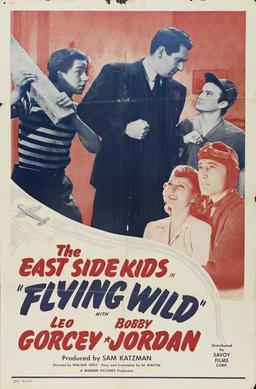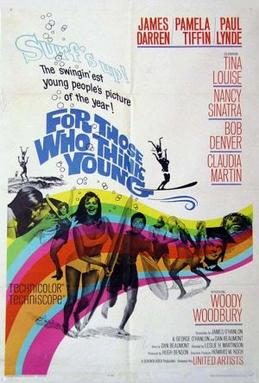
William Washington Beaudine was an American film director. He was one of Hollywood's most prolific directors, turning out a remarkable 179 feature-length films in a wide variety of genres.

Night of the Ghouls is a horror film written and directed by Ed Wood. The film was shot between April and May 1958. The film features some reoccurring cast members and characters from Wood's 1955 Bride of the Monster, including Tor Johnson reprising his role of Lobo and Paul Marco again playing the character of Kelton the cop, while the Amazing Criswell plays himself in the frame story of the film. Another returning character is Police Captain Robbins of Homicide, although the character was played by Harvey B. Dunn in Bride of the Monster, and by Johnny Carpenter in Night of the Ghouls.

Hugh Milburn Stone was an American actor, best known for his role as "Doc" on the Western series Gunsmoke.

Flying Wild is a 1941 American comedy thriller film directed by William Beaudine under the pseudonym "William West" as the fifth installment of the East Side Kids series which eventually totalled 22 films. The film is the team's first one in the spy film genre. The supporting cast includes Joan Barclay, Dave O'Brien and Herbert Rawlinson. It was distributed by Monogram Pictures.

Craig Stevens was an American film and television actor, best known for his starring role on television as private detective Peter Gunn from 1958 to 1961.

Invisible Ghost is a 1941 American horror film directed by Joseph H. Lewis, produced by Sam Katzman and starring Bela Lugosi.

The Ape Man is a 1943 American horror film directed by William Beaudine. The film is based on "They Creep in the Dark" by Karl Brown, which was published in The Saturday Evening Post. It stars Bela Lugosi as Dr. James Brewster who is aided by his colleague Dr. Randall. The doctor manages to transform himself into a ape man hybrid and desperately seeks a cure. Brewster believes that only the injection of human spinal fluid will prove effective as a cure. As Randall refuses to help him, Brewster and his captive gorilla seek involuntary donors.

The Alphabet Murders is a 1965 British detective film directed by Frank Tashlin and starring Tony Randall, Anita Ekberg and Robert Morley. It is based on the 1936 novel The A.B.C. Murders by Agatha Christie.

Detective Lloyd (1931) is a 12-chapter Universal movie serial. A co-production between the American company Universal and the British company General Films, it was filmed entirely in Britain with British and Commonwealth actors. It was the only sound serial ever produced in the UK. Although a print was shown on British and Swedish TV as recently as the 1970s, the film is now considered lost.

Wheeler Oakman was an American film actor.

Brenda Starr, Reporter (1945) was the 25th film serial released by Columbia Pictures. It was inspired by Brenda Starr, Reporter, a popular comic strip created by Dale Messick. The title role was played by Joan Woodbury, who had similar roles in feature films for Columbia and Monogram.

Joan Elmer Woodbury was an American actress beginning in the 1930s and continuing well into the 1960s.

The Old Maid is a 1934 play by American playwright Zoë Akins, adapted from Edith Wharton's 1924 novella of the same name. The play as published has six "episodes", covering twenty-one years of time. It has a large cast, and three settings; one is used for the last four episodes (scenes). The story concerns two women, cousins, who allow rancor over a lost love to become a struggle for the illegitimate daughter of one.

For Those Who Think Young is a 1964 beach party film shot in Techniscope, directed by Leslie H. Martinson and featuring James Darren, Pamela Tiffin, Paul Lynde, Tina Louise, Bob Denver, Nancy Sinatra in her film debut, Robert Middleton, Ellen Burstyn, Claudia Martin and Woody Woodbury.

I Killed That Man is a 1941 American mystery film directed by Phil Rosen and starring Ricardo Cortez, Joan Woodbury and Iris Adrian. Produced by the King Brothers for release by Monogram Pictures, it is a remake of the 1933 film The Devil's Mate which Rosen had also directed.

Ghosts on the Loose is a 1943 American comedy horror film and the fourteenth film in the East Side Kids series, directed by William Beaudine. The picture co-stars horror film icon Bela Lugosi as well as Ava Gardner in one of her earliest roles.

The Chinese Cat is a 1944 mystery film starring Sidney Toler as Charlie Chan.

Too Many Winners is a 1947 American mystery crime film directed by William Beaudine and starring Hugh Beaumont, Trudy Marshall and Ralph Dunn. Made and released by Producers Releasing Corporation, it was one of a number of films featuring the private detective Michael Shayne.

While the Patient Slept is a 1935 comedy murder mystery film directed by Ray Enright starring Aline MacMahon as a nurse/crime sleuth and Guy Kibbee as her boyfriend and police detective. It is based on the novel of the same name written by Mignon G. Eberhart.

Forgotten Women is a 1931 American pre-Code drama film directed by Richard Thorpe and starring Marion Shilling, Beryl Mercer and Rex Bell. It was distributed by Monogram Pictures, one of the leading studios outside the majors.




















